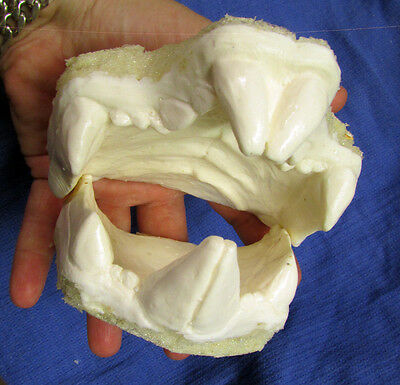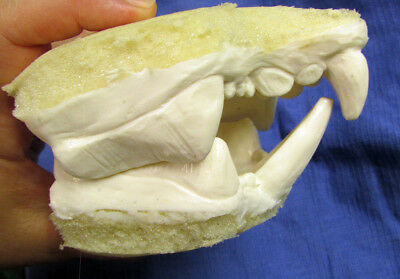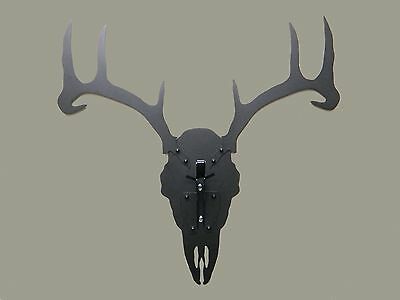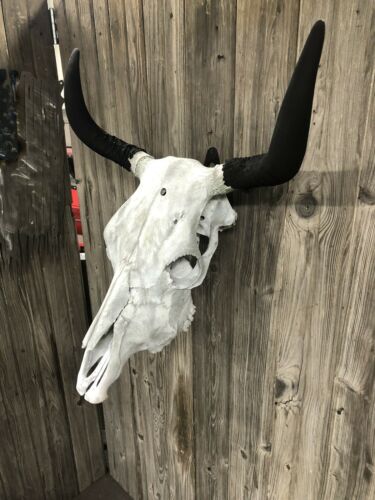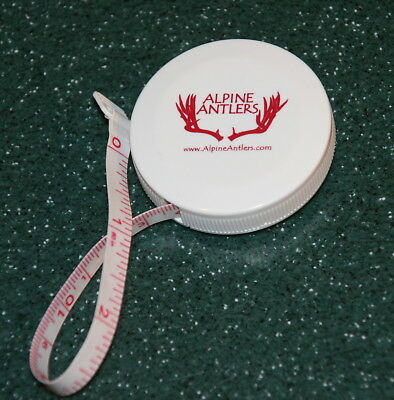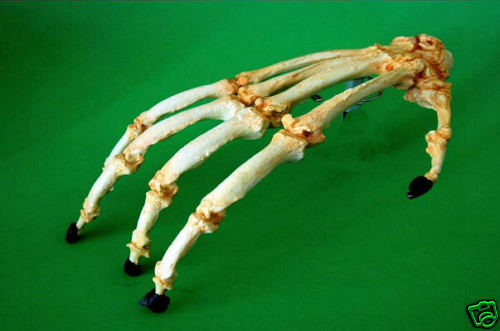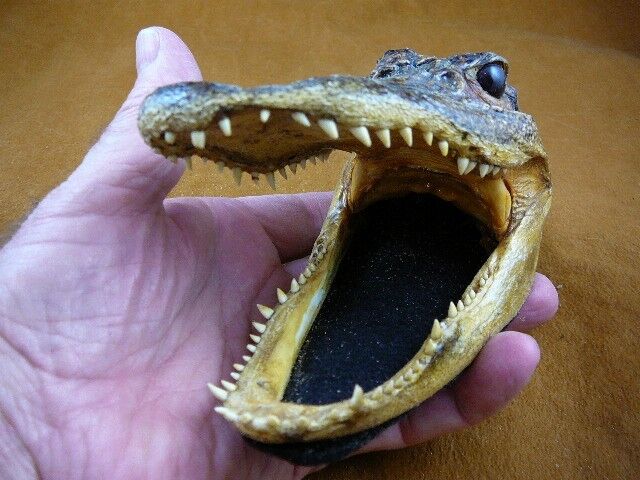-40%
Thylacoleo marsupial lion fossil jaws teeth cast replica taxidermy
$ 8.94
- Description
- Size Guide
Description
<img src="https://ti2.auctiva.com/web/aswCredit.gif" border="0"><br><a href="https://pages.ebay.com/seller-center/listing/listing-advanced-sellers/third-party-listing-tools.html#auctiva" target="_blank"><img src="https://ti2.auctiva.com/images/sc1line0.gif" border="0"></a>This is a urethane plastic replica sculpture of the jaws and teeth of Thylacoleo Carnifex, which was a jaguar-sized extinct marsupial carnivore. ;T. Carnifex was the largest known marsupial carnivore and is believed to have gone extinct around 30,000 years ago or perhaps a bit more recently than that. ;he large front incisors would likely have given it a vaguely rodent-like appearance, and surprisingly its closest living relatives are herbivorous wallabies, wombats and kangaroos. But behind those "rodent" teeth were huge flesh cutting carnassial teeth, the largest ever found on any carnivorous mammal. Recent studies also suggest that this animal had a huge bite force for its size and would have been able to exert up to 1000 pounds per square inch on anything caught between those massive carnassial molars.
This cast is an artist's sculpture which was based upon fossil material and other cranial reconstructions of the animal. It measures 4 1/4" long/11cm (from the front center incisors to the last upper molars, on a diagonal, only the upper jaw measurements are given) and 4 3/8"/10.5cm wide. The cast is filled with yellow urethane foam for stability, and the foam makes it easy to machine and accepts hot glue (and other non-waterbased glues) really well. This would be perfect for mask making/costuming or educational use. The cast can be painted if desired, but you will need to do some minor surface preparation. I get good results from light scuffing with a very fine grain foam sanding block (120 grit or finer) and then cleaning the cast thoroughly with denatured alcohol (rubbing alcohol would also work, as would acetone), since there will be some mold release naturally present that will repel paint. Then you can prime it with ordinary canned automotive-type primer (white primer works best and is easiest to paint over) and then paint with pretty much any kind of paint, including water-based acrylics. Then you can seal it or laquer it to protect the finish.
Track Page Views With
Auctiva's FREE Counter
